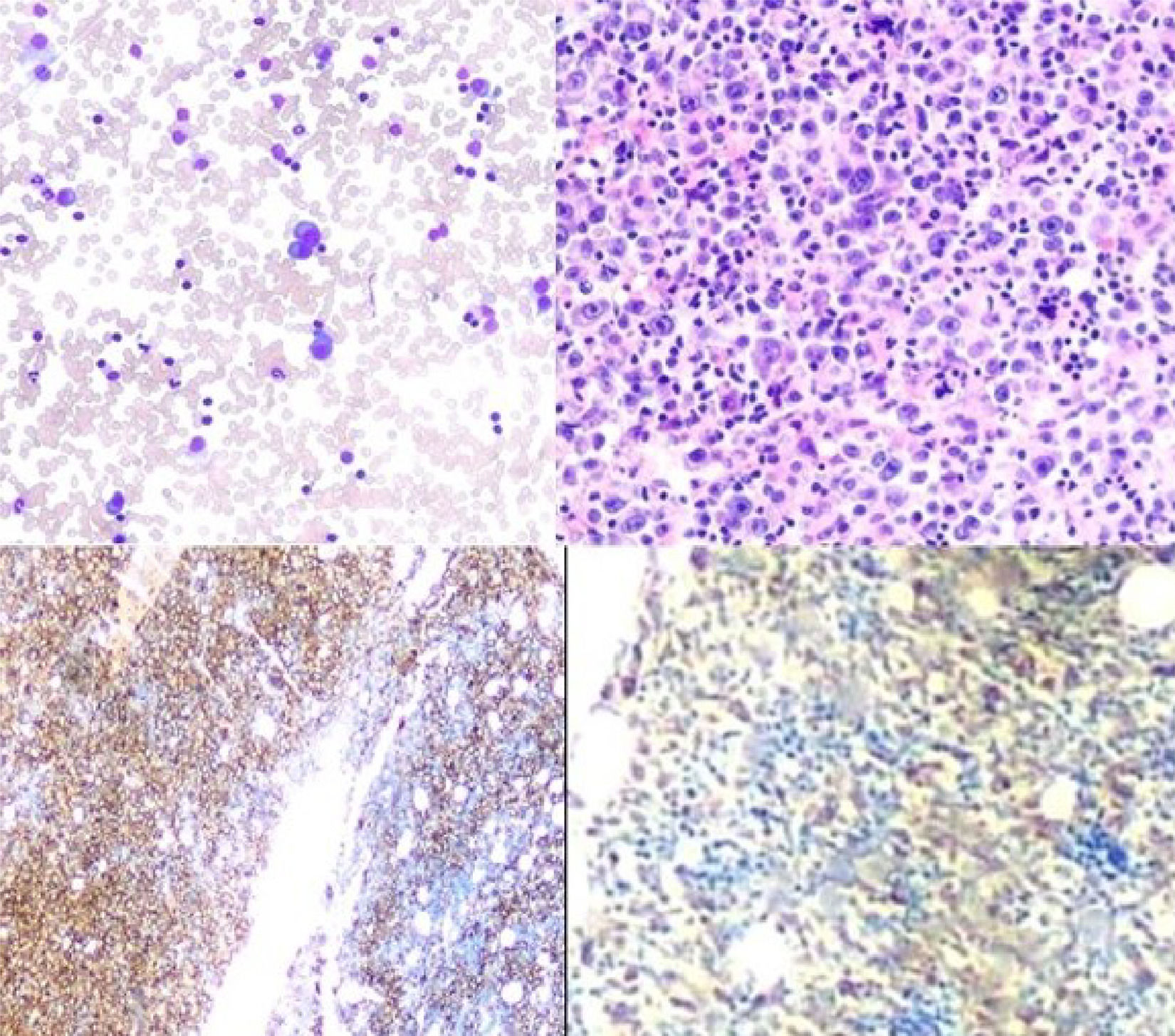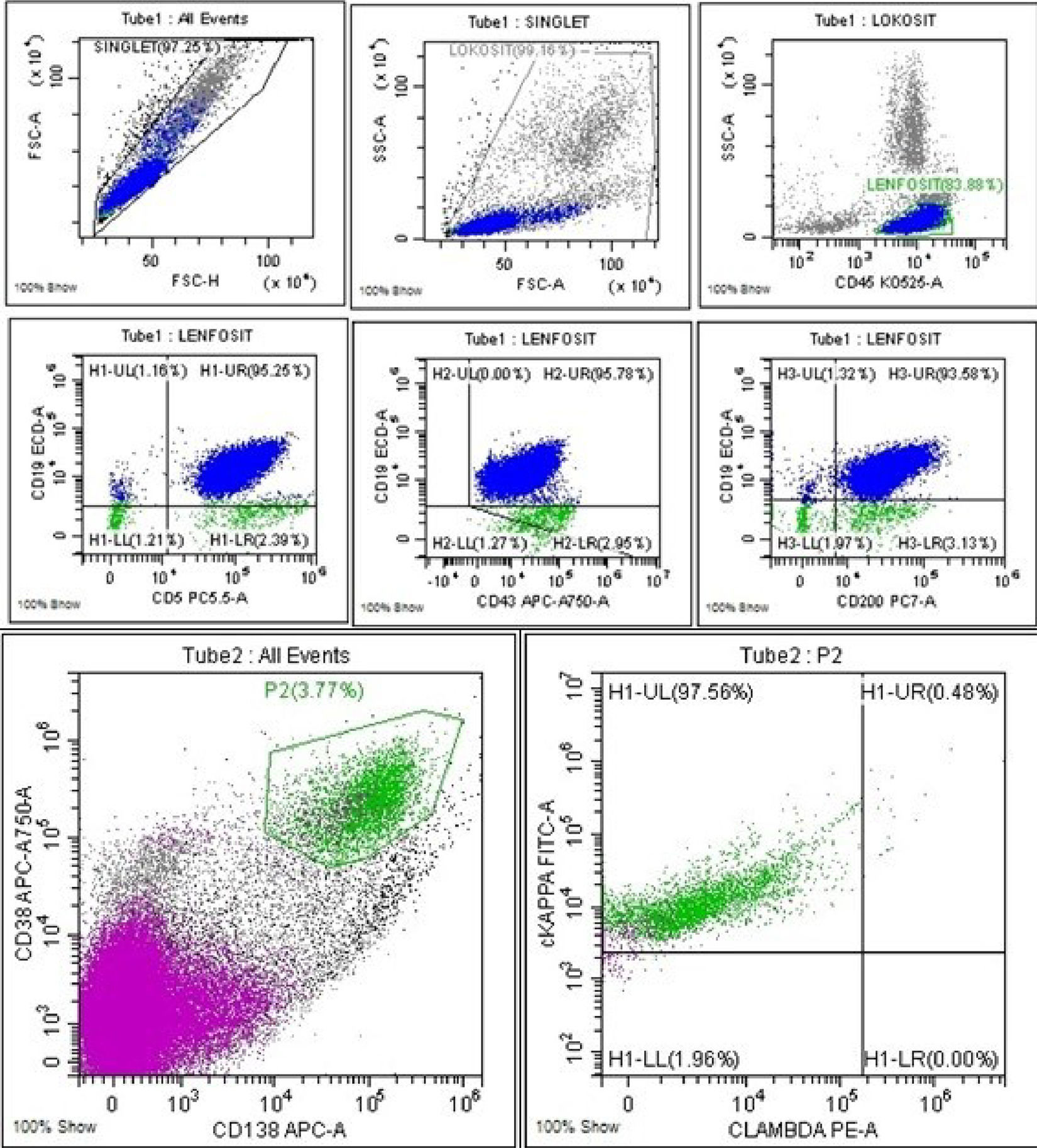
Hematology Specialist Association 18. National Congress
Mais dadosPlasma cell leukemia (PCL) is a rare and highly aggressive plasma cell neoplasm that develops in 0.5% to 4% of patients with multiple myeloma (MM). In the diagnostic criteria updated in 2021, the circulating plasma cell rate, which is 20%, is defined as 5% or more. Plasma cell neoplasms originate from post-germinal center B cells and share many biological features with other B-cell lymphoproliferative diseases. Rarely, it can occur simultaneously with some indolent B-cell lymphomas, which may provide insight into common disease-initiating events and genetic changes. In this article, we present a case of primary plasma cell leukemia that presented with acute tumor lysis syndrome in a patient initially diagnosed with chronic lymphocytic leukemia.
Case ReportA 74-year-old male with RAI Stage 1 Chronic Lymphocytic Leukemia (CLL), previously managed without therapy for the past 3 years, presented with fever, weakness, and elevated white blood cell counts over the past month. Initial laboratory tests revealed anemia (Hb 9.3 g/dL), elevated WBC (52 × 10³/µL), renal impairment (creatinine 2.5 mg/dL), elevated uric acid (12 mg/dL), and elevated LDH levels. The patient was diagnosed with tumor lysis syndrome and began treatment with intravenous hydration and allopurinole. Peripheral blood smear showed an increase in mature lymphocytes, smudge cells, and plasma cells. Serum protein electrophoresis detected 0.5 g/dL of M-protein, and immunofixation identified a monoclonal IgG kappa band. Bone marrow aspiration revealed two morphologically distinct populations of lymphocytes and plasma cells. Flow cytometry demonstrated a B cell population positive for CD5 and CD19 with kappa light chain restriction, and an increased number of clonal plasma cells (CD38+ CD138+ CD19+ CD45+) with kappa light chain dominance. Bone marrow biopsy confirmed the presence of 85% plasma cells positive for CD138, with kappa monoclonality. FISH analysis was negative for p53 deletion and t(11;14) translocation. Despite initiating anti-myeloma therapy, the patient's condition rapidly deteriorated. The patient was ultimately diagnosed with Stage 1 CLL complicated by plasma cell leukemia but succumbed to respiratory failure.
ConclusionPlasma cell leukemia is a disease characterized by abnormal, agressive plasma cells, while CLL involves malignant mature B-cell lymphocytes. Although it is extremely rare for both conditions to occur simultaneously, it is important for clinicians to carefully evaluate patients, as both cell types originate from the same multipotent stem cells. Multiparametric flow cytometry of bone marrow samples can aid in the accurate and timely diagnosis of such cases. Key questions have arisen regarding whether B-cell CLL and multiple myeloma originate from a single clone or from two distinct clones appearing simultaneously. Previous studies have utilized various techniques, such as FISH or immunoglobulin gene rearrangement analysis, to explore this issue.










